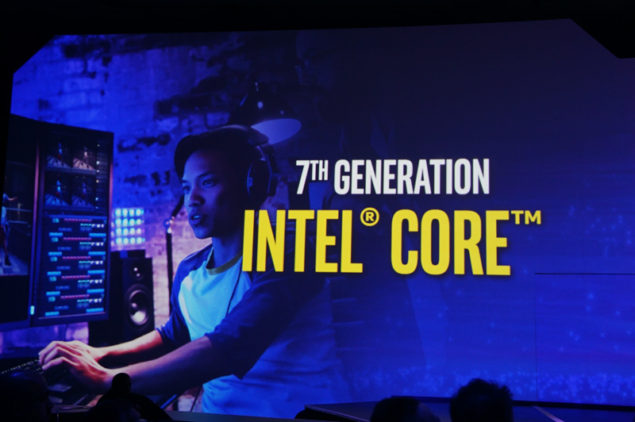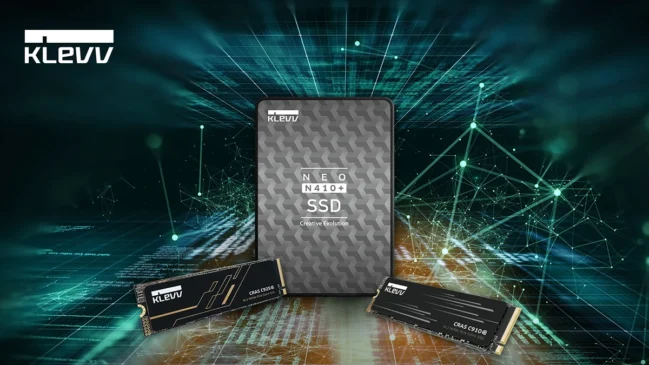
The Intel 7th generation Kaby Lake processor family has been leaked by Chinese sources. This leak confirms the various SKUs of the lineup. The details will be up on IDF’16.
The newest Kaby Lake processors builds up from the foundation of Skylake architecture with further added optimizations. We are focusing on the desktop lineup today, though the Kaby Lake processor family will come on multiple platforms.
10 SKUs Detailed Within the Intel Kaby Lake Desktop CPU Lineup
In addition to these details, there may be a delay on the CPU’s release. The Kaby Lake processors will release early 2017, according to Coolaler. At this moment, Intel plans to bring out mobility based processors on the Kaby Lake architecture with great haste. Intel has revealed at IDF that they are shipping mobile chips already to OEMs. The main focus of Intel is to ship Kaby Lake chips to mobile platforms (4W- 15W) during Fall 2016. After this they will focus on the desktop platform.

The desktop platform will have two different variants to the chips. One variant focusing on the HEDT market and the other for the mainstream. The HEDT lineup is known as Kaby Lake-X and will be on the LGA 2066 socket, similarly to the Skylake-X chips. The mainstream lineup is internally known as Kaby Lake-S and it is featured on the LGA 1151 socket. The change in the chipset (200-series) would not make it compatible with older gen motherboards (100-series), despite being the same socket as before.
Memory Usage Roadmap for Intel Architecture Products
DRAM Usage of Different Kaby Lake Processors (Mobile and Desktop)
Intel 7th Generation Core Desktop Lineup
Intel K Series Kaby Lake CPUs:
Going into the details of this series, we see two K series models. These are of unlocked design that are built for overclocking. The flagship being the Core i7-7700K featuring 4 cores, 8 threads and 95W TDP. This CPU is clocked at 4.2GHz which can boosted to 4.5GHz, features 8MB of L3 cache. Next in line is the Core i5-7600K, a 4 core chip without multi-threading support. This chip has 6MB of L3 cache and 95W TDP. Base clock is 3.8GHz and is capable of boosting to greater than 4GHz.
| Model Name | Number of Cores | TDP | Clock Speed | L3 Cache |
| Core i7-7700K | 4 cores, 8 threads | 95W | 4.2 Base Clock
4.4 Boost Clock |
8MB |
| Core i5-7600K | 4 | 95W | 3.8 Base Clock
4.0 Boost Clock |
6MB |
Intel S Series Kaby Lake CPUs:
This series has four standard models. These are the Core i7-7700, Core i5-7600, Core i5-7500 and Core i5-7400. With a base clock of 3.6GHz, the core i7-7700 comes with 4 cores and a multi-threaded design. This also has 8MB L3 cache and 65W TDP. The remaining Core i5 models are quad core CPUs without multi-threading support. Clock speeds are as follows:
| Model Name | Number of Cores | TDP | Clock Speed | L3 Cache |
| Core i7-7700 | 4 (multi-threaded) | 65W | 3.6GHz | 8MB |
| Core i5-7600 | 4 | 65W | 3.5GHz | 6MB |
| Core i5-7500 | 4 | 65W | 3.4GHz | 6MB |
| Core i5-7400 | 4 | 65W | 3.0GHz | 6MB |
Intel T Series Kaby Lake CPUs:
There are also some T variants of the chips, which represent low power usage. Designed to fit on low-power desktop PCs, TDP of these chips are set to 35W. More information is as follows
| Model Name | Number of Cores | TDP | Clock Speed | L3 Cache |
| Core i7-7700T | 4 (multi-threaded) | 35W | 2.9GHz | 8MB |
| Core i5-7600T | 4 | 35W | 2.8GHz | 6MB |
| Core i5-7500T | 4 | 35W | 2.7GHz | 6MB |
| Core i5-7400T | 4 | 35W | 2.4GHz | 6MB |
General Information on Kaby Lake Desktop Processors

The Kaby Lake processors are a step up from the last generation. They will provide increase in performance. The processors will retain enthusiast level features such as enhanced full range BCLK overclocking and 95W Unlocked options to choose from.
There has been an increase in core count on Intel’s enthusiast chip platform Broadwell-E, but things will be the same on consumer dual core and quad core options as well as the enthusiast quad core options. The media and display options have some new key features, such as single 5K 30Hz and dual 5K 60 Hz display capabilities, hardware decode of HEVC 10 bit, VP9 10-bit hardware, UDH/4K display resolutions and Intel’s Thunderbolt gen3 support.

Another important update for the upcoming family of processors is The Intel 200-Series PCH. This will include several SKUs such as Z270, H270, Q270, Q250 and B250. This new chipset doesn’t have drastic changes over the Skylake PCH, but it does include Intel Optane technology support. This delivers high-performance SSDs and memory solutions by utilizing Intel’s 3D
Mansion Beach (Optane SSD PCIe/NVMe Gen3 x4), Brighton Beach (Optane SSD PCIe/NVMe Gen3 x4) and Stony Beach (Optane Memory PCIe/NVMe Gen 3 x2 (m.2)) solutions will be supported by the KBL-PCH.








